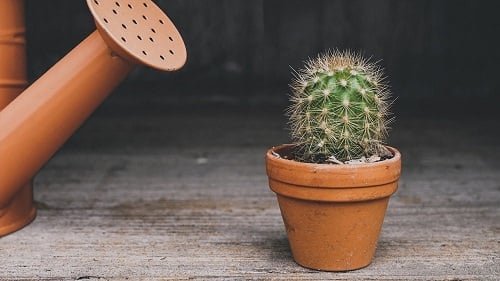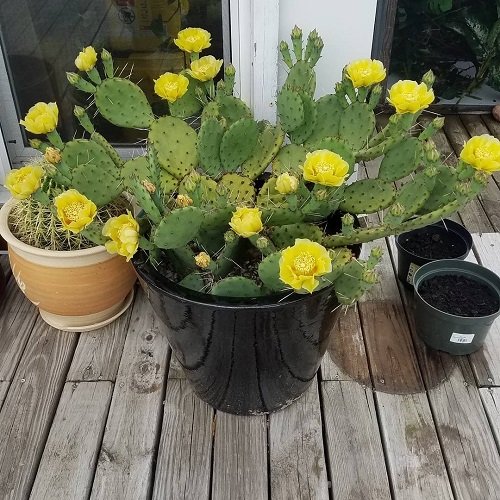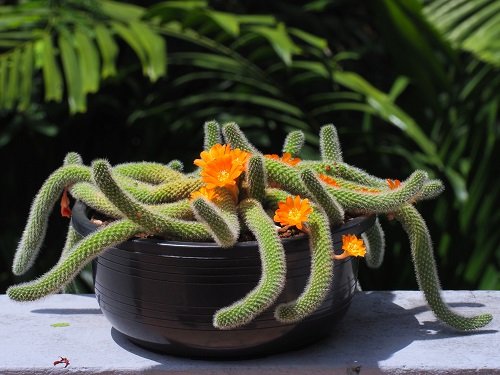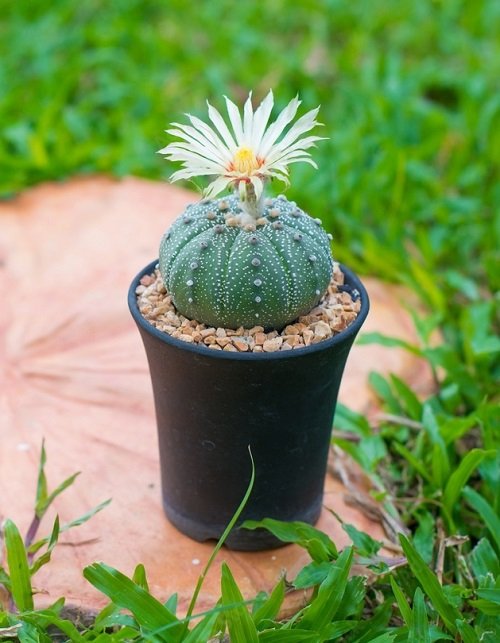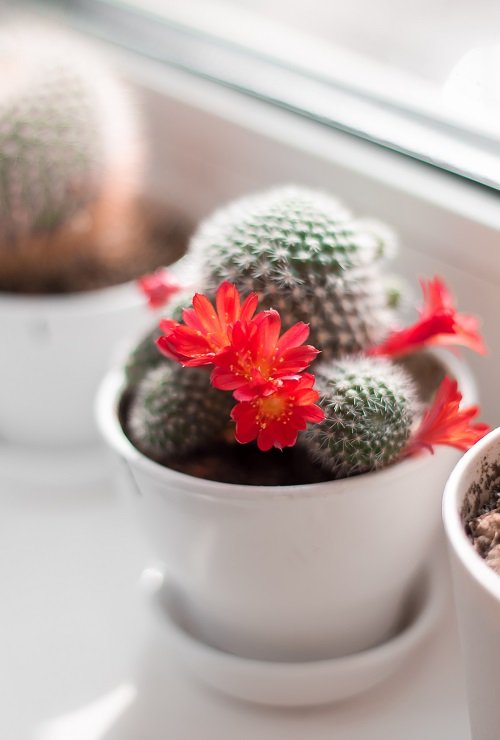For enthusiastic gardeners, Cactus can make for a great addition! Here is all you need to know on How to Grow Cactus from Seeds!
Starting cactus from seeds is an inexpensive growing method that will only cost a few cents per plant. This will allow you to give them away as gifts and share them with friends too! Here is everything and more you need to know on How to Grow Cactus from Seeds!
Check out our article on best fertilizer for cactus here
Getting Cactus Seeds
Seeds of your choice can be purchased from any garden supply center, nursery, online, or harvested from a cactus in bloom. The seed pods are usually a brightly-colored off-shoot from a plant that bears flowers. Once flowers fall off, the pod filled with seeds remains.
Slice the pod open with a sharp knife and scrape out the seeds. Seed color and size vary depending on the species.
Here are some popular cactus types you can grow easily
How to Grow Cactus from Seeds
Seeds make it easier to get different cactus species that may not be available as plants or available at a very high price. This way, you can fill your home or landscape with a wide variety of these interesting desert plants! Here is how you can start growing cactus from seeds for yourself!
Things You’ll Need
- Cacti seed
- A small plastic or terracotta pots
- Vermiculite or fine grit
- Sheet of glass
- Fork or spoon
- Free-draining compost or cactus compost
- Tweezers
- Gravel
- Prepare a pot by filling it with gritty and moist compost. Use gentle pressure to firm down the surface and make it level. Take care not to sow the mixed cactus seeds too thickly as you scatter them evenly over the surface.
- Cover the seeds with a light layer of vermiculite or fine grit, making sure to distribute it over the entire compost surface evenly. To maintain soil moisture, place the pot in a greenhouse or on a warm windowsill and cover it with a transparent plastic bag.
- Within a few weeks, seedlings will begin to develop. Once this occurs, remove the plastic bag and water the compost whenever it becomes dry. Additionally, it is recommended to regularly spray the surface with water to ensure that it stays consistently moist.
- In the next spring, your seedlings should be mature enough for transplanting.
- Use a fork or spoon gently tease out each individual cactus, being cautious not to get pricked by their spines.
- Prepare a small pot by filling it part-way with gritty compost, and then gently place the cactus seedling into the pot. To ensure that the seedling is not sitting at an angle, use tweezers to adjust its position as necessary.
- Fill the remaining space around the seedling with compost and water it thoroughly. If necessary, add more compost to fill any gaps. Next, use a spoon to arrange gravel around the seedling.
Note: Cactus seedlings are very sensitive and need protection from direct sun. Provide them with bright light and stable growing conditions until they become established plants, then introduce them to the outdoors slowly.
For colder climates, pick cold-hardy varieties. The Opuntia family of cactus plants is king in cold environments.
Have a look at the succulents you can grow from seeds here
Best Cacti for Seed Propagation
If you’re looking to propagate cacti from seeds, it’s important to choose the right species for the job. Some cactus species are easier to grow from seeds than others, and they require less effort and patience. One of the best cacti for seed propagation is the Mammillaria species, which includes more than 200 species. These cacti are native to Mexico and the southwestern United States and are popular among gardeners due to their colorful flowers and unique shapes.
Other cactus species that are good candidates for seed propagation include Echinocactus grusonii, Gymnocalycium mihanovichii, and Rebutia species. It’s essential to choose a species that matches your climate and growing conditions and follow the proper steps for seed germination to ensure successful propagation. You can find the Best Cacti to Grow from Seeds below.
Requirements for Growing Cactus from Seeds
Sunlight
Cacti require plenty of sunlight to grow, so it’s important to provide them with adequate light. They thrive in bright, sunny locations, so placing them near a south-facing window is ideal.
If you’re growing cacti indoors and don’t have a sunny window, you can also use artificial grow lights to provide the necessary light. Cacti require at least six hours of direct sunlight each day.
Soil
Cacti require soil that is well-draining. It’s best to use a mixture of sand, perlite, and peat moss for growing cactus from seeds. Sand helps to improve drainage, while perlite provides aeration and helps to prevent soil compaction. Peat moss helps to retain moisture in the soil, which is important for cacti to grow properly.
Learn some Great Tips to Rejuvenate Your Old Soil here
Avoid using regular potting soil, as it retains too much moisture and can lead to rot.
Water
Cacti don’t require a lot of water, especially when they are young. Overwatering can cause root rot, which can be fatal to the seedlings. It’s best to wait until the soil is completely dry before watering, and then only water lightly.
Here are Signs of Overwatering & How to Save an Overwatered Plant
To water, gently pour water onto the soil until it begins to drain out of the bottom of the container. Allow the excess water to drain away before returning the container to its growing location.
Temperature
Cacti prefer warm temperatures, and they don’t tolerate cold temperatures well. The ideal temperature range for cacti is between 70 and 80°F (21 to 27°C). Keep the container in a warm location, and avoid exposing the seeds to cold drafts.
If the temperature drops below 50°F (10°C), it can cause damage to the cactus, and it’s best to move it to a warmer location.
Cactus Plant Care
Fertilizer
Cactus seeds require very little fertilizer, but a small amount can help them grow and develop. When using fertilizer, it’s important to choose a specialized cactus fertilizer that is high in phosphorus and low in nitrogen. During the growing season, which typically occurs in spring and summer, you can fertilize your cactus once a month. However, it’s essential not to over-fertilize, as excessive nutrients can cause weak stems and excessive growth, making the plant more vulnerable to pests and diseases.
Check out our article on the best fertilizer for cacti here
Pests and Diseases
Although cactus seeds are generally hardy, they can still fall prey to pests and diseases. One common pest that can affect cactus seeds is the fungus gnat. These tiny black insects lay their eggs in the soil, and their larvae can feed on the roots of the seedlings, causing stunted growth or even death. To combat fungus gnats, avoid overwatering the soil, and use a well-draining soil mixture. You can also use sticky traps or insecticides specifically formulated for fungus gnats to control their population.
Here are Types of Common Pests in Your Garden & How to Get Rid of Them
Another pest that can affect cactus seeds is spider mites. These tiny pests can cause damage to the seedlings by sucking the sap out of their tissues, leading to wilting and yellowing. To control spider mites, you can use an insecticidal soap or spray, following the manufacturer’s instructions carefully. Be sure to test the solution on a small area of the plant before applying it to the entire plant.
Best Cacti to Grow from Seeds
1. Barrel Cactus
Botanical Name: Echinocactus
Looking for the Best Cacti to Grow from Seeds? The Barrel Cactus is the answer. It can reach 5-10 feet tall with a 2-foot spread. Produces a 3-inch wide orange-yellow flower on each tip in summer.
Check out 17 Beautiful Cactus With Pink Flowers here
2. Ball Cactus
Botanical Name: Parodia magnifica
It can reach a mature height of 3 feet and is covered with hair-like spines. Produces yellow flowers in summer.
3. Pincushion Cactus
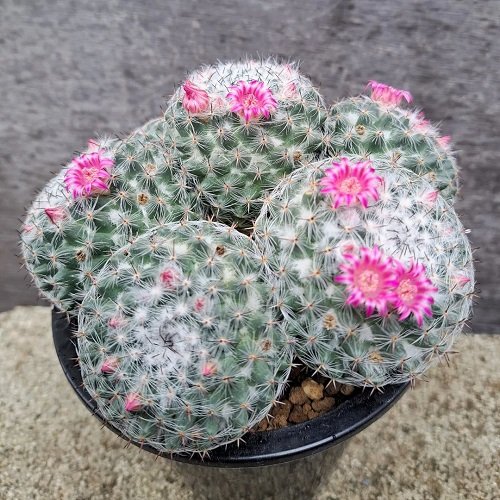
Botanical Name: Mammillaria
Looks like a round pincushion and will tolerate heat and light frost. This cactus produces clusters of bright pink funnel-shaped flowers in the spring.
4. Prickly Pear
Botanical Name: Opuntia
Has round, flat joints called pads with small, barbed spines. It does great in indirect light too.
Here are the Best Yellow Flowering Cactus
5. Rebutia
Botanical Name: Rebutia
Quite easy to grow and maintain, Rebutia is definitely worthy of our Best Cacti to Grow from Seeds list. Grows cute clusters of small flowers in the right growing conditions.
6. Acanthocereus
Botanical Name: Acanthocereus
A sprawling cactus plant with long stems. It stays compact if grown in pots, which makes it a good indoor specimen too.
7. Astrophytum asterias
Botanical Name: Astrophytum asterias
One of the most beloved types of cacti is the Astrophytum. This plant grows at a slow pace but is known for producing remarkably large flowers that can be as big as the cactus itself. Its striking appearance makes it a popular choice among cacti enthusiasts.
8. Gymnocalycium baldianum
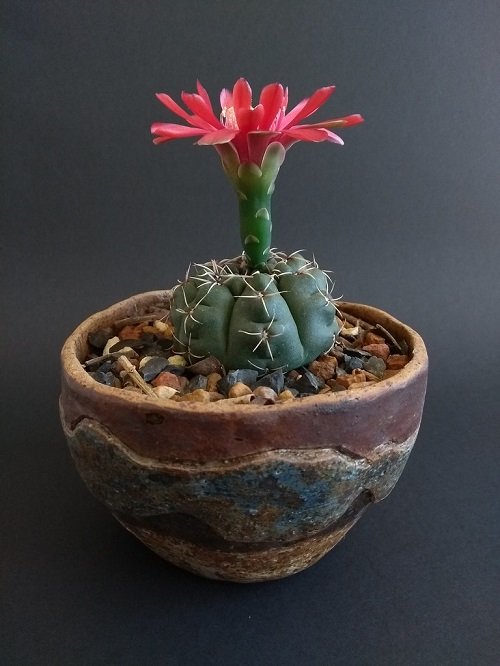
Botanical Name: Gymnocalycium baldianum
To propagate Gymnocalycium baldianum, two methods can be used: seed harvesting or offsets. For seed propagation, it’s best to cultivate the seeds in early spring when the temperature ranges from 66 to 75 °F or 19 to 24 °C.
Read about Mind Blowing Saguaro Cactus Facts here
9. Blue Barrel Cactus

Botanical Name: Ferocactus glaucescens
Blue Barrel Cactus can be easily grown from seeds that are sown during the spring or summer season.
10. Golden Barrel Cactus

Botanical Name: Echinocactus grusonii
The Golden Barrel Cactus is a truly captivating plant that stands out in the desert with its distinctive round shape and deep ribs.
11. Sulcorebutia rauschii
Botanical Name: Sulcorebutia rauschii
Another of the Best Cacti to Grow from Seeds is the Sulcorebutia rauschii. The Sulcorebutia rauschii f. violacidermis is a stunning clustering cactus that is renowned for its captivating pink hue, which intensifies when exposed to bright sunlight.
12. Orange Barrel Cactus
Botanical Name: Ferocactus cylindraceus
This species of cactus is commonly found in the southwestern regions of the United States and Mexico. It has a wide distribution in its natural habitat, typically growing on rocky slopes and canyon walls.
Check out 8 Exotic Fruits that Grow on Cactus here
13. Mammillaria lasiacantha
Botanical Name: Mammillaria lasiacantha
The Mammillaria Lasiacantha is a delightful and petite cactus. As it develops, it develops a globular form and grows slowly.
14. Silken Pincushion Cactus

Botanical Name: Mammillaria bombycina
This variety is quite easy to grow; it produces large amounts of seeds that freely germinate near the parent plant.
15. Gymnocalycium mihanovichii
Botanical Name: Gymnocalycium mihanovichii
For sowing Gymnocalycium seeds, it is advisable to choose the warmer months of the year. However, if you reside in a colder region, you can still plant the seeds successfully by ensuring a temperature of 21º C (70º F).
Learn How to Make a Christmas Cactus Bloom at Christmas here
16. Indian Head Cactus
Botanical Name : Parodia ottonis
Want a unique, beautiful, and Best Cacti to Grow from Seeds? Here’s the one you’ve been looking for. You can grow Parodia ottonis from both seeds or offsets.
17. Echinocereus engelmannii

Botanical Name : Echinocereus engelmannii
The cacti in question are typically characterized by their cylindrical shape and dense spines that are closely set. It can be grown from offsets and seeds.
18. Rebutia minuscula
Botanical Name : Rebutia minuscula
Belonging to the Cactaceae family, Rebutia minuscula is a well-known small cactus that is highly sought after. When young, the cactus typically grows in a solitary fashion, while it becomes mound-forming as it ages.
19. Thelocactus bicolor
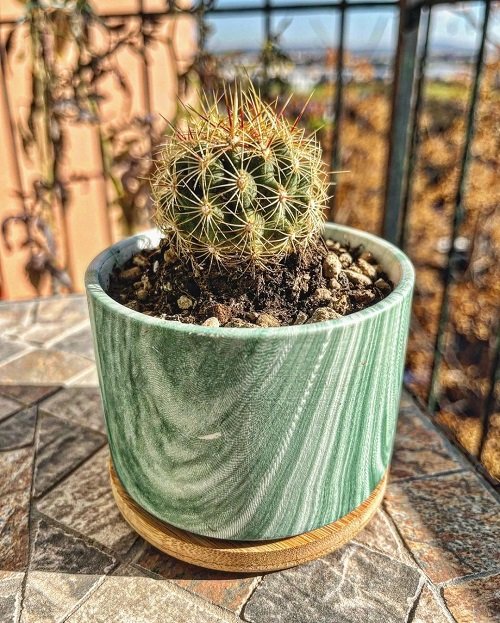
Botanical Name: Thelocactus bicolor
The quickest and most straightforward way to propagate Thelocactus bicolor is through seed germination. However, it is also possible to propagate the plant through cuttings.
Here’s all you need to know about growing dog tail cactus
20. Peyote Cactus

Botanical Name: Lophophora williamsii
Germinating Peyote seeds is a relatively simple process. One effective method for germinating the seeds involves ensuring adequate ventilation and allowing for ventilation two to three weeks after seed germination.
21. Mammillaria compressa

Botanical Name: Mammillaria compressa
Mammillaria compressa can be grown from seeds or by dividing offsets.
22. Coryphantha macromeris

Botanical Name: Coryphantha macromeris
Coryphantha macromeris is a type of cactus that belongs to the Cactaceae family and is not commonly found. The plant has a growth pattern that results in low mats or hemispheric mounds. It can be cultivated through the use of either seeds or cuttings.
23. Mammillaria glassii
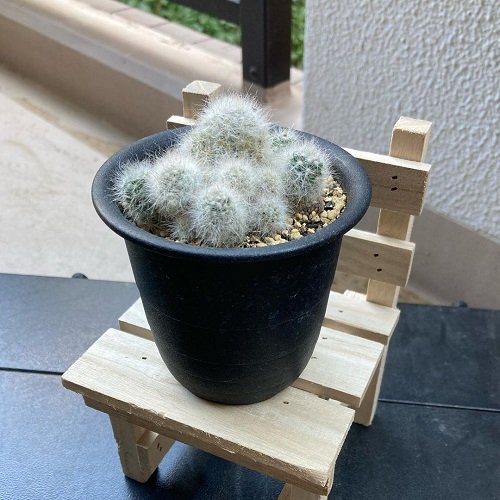
Botanical Name: Mammillaria glassii
The M. glassii is a petite, round-shaped cactus that tends to group together, producing multiple branches. It is possible to cultivate M. glassii using seeds, offsets, or cuttings.
Here is the best Fern Leaf Cactus Care and Growing Guide
24. Echinopsis oxygona

Botanical Name: Echinopsis oxygona
Echinopsis oxygona is categorized within a cluster of cacti that have a high rate of reproduction. The most dependable approach for cultivating this plant is through the use of offsets, although it is also possible to propagate it using seeds.
25. Eagle claw cactus
Botanical Name: Echinocactus horizonthalonius
A great addition to our Best Cacti to Grow from Seeds list, this cactus can be either sowing its seeds or through grafting techniques. However, planting its seeds is the simplest approach to cultivating this cactus species.
26. Ferocactus peninsulae

Botanical Name: Ferocactus peninsulae
Ferocactus peninsulae is an appealing cactus that is indigenous to the deserts of Baja California Sur in Mexico. This cactus species has a globular or barrel-shaped stem with noticeable ridges.
27. Mammillaria hahniana
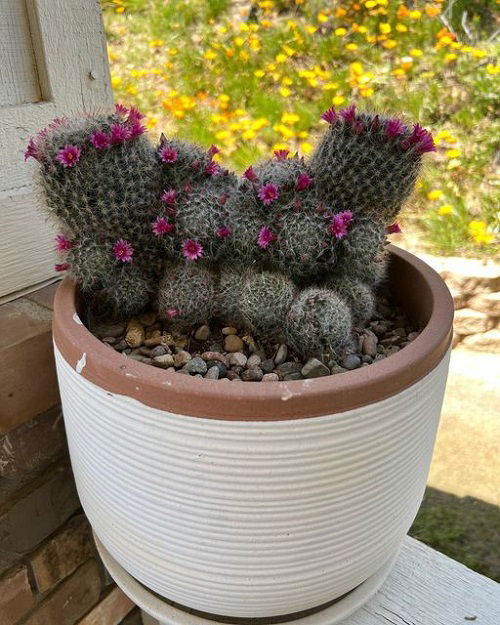
Botanical Name: Mammillaria hahniana
Belonging to the Cactaceae family, Mammillaria hahniana is a sought-after powder puff cactus that thrives in sunlight and is low maintenance. This cactus species is especially eye-catching, with its solitary round stems adorned with red-purple flowers.
28. Notocactus magnificus
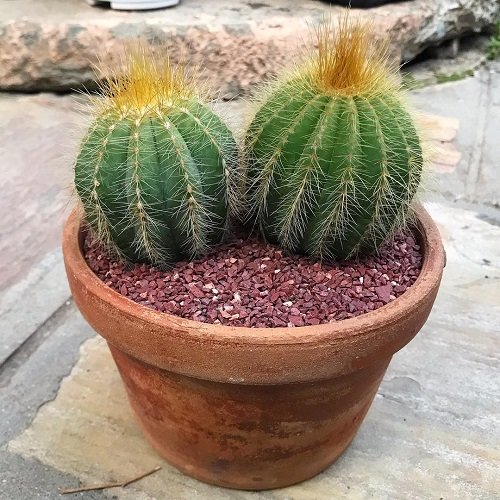
Botanical Name: Notocactus magnificus
Notocactus magnificus can be propagated through two methods – seed or cutting. Propagation through seeds is a straightforward process where the seeds are sown in sandy loam soil, and the plant is kept in a high-humidity environment.
Check out Jumping Cholla Cactus Facts and Growing Information here
29. Mammillaria longimamma

Botanical Name: Mammillaria longimamma
Mammillaria longimamma is a perennial cactus commonly utilized as an ornamental plant due to its drought-tolerant nature and ability to grow in arid conditions such as deserts. It can be grown from seeds.
30. Echinopsis eyriesii
Botanical Name: Echinopsis eyriesii
Due to its petite size and simple maintenance requirements, this cactus is an excellent choice for indoor gardening. It can thrive in well-lit office spaces, bringing a pop of color and liveliness to otherwise dull environments, making it one of the top cacti on the list of Best Cacti to Grow from Seeds.
31. Bishop’s Cap
Botanical Name: Astrophytum myriostigma
With its star-shaped design and domed appearance, this variety of cactus is visually striking. When cultivated outdoors, it can grow over 3 feet in height and reach a diameter of 8 inches. The plant typically has three to seven pronounced ribs, adding to its distinct appearance.
32. Parodia scopa
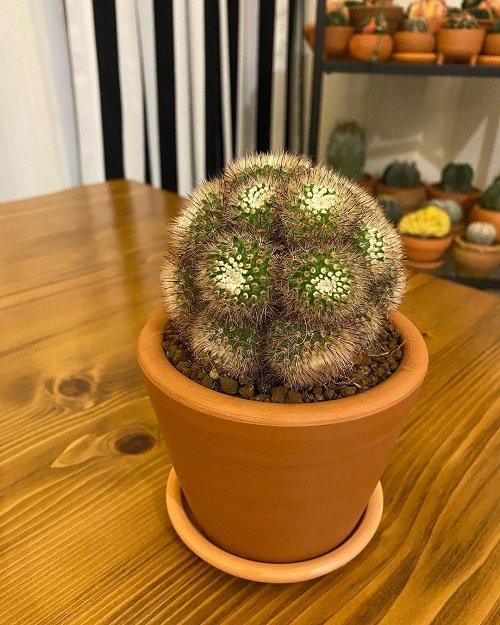
Botanical Name: Parodia scopa
Parodia scopa is a cactus species that boasts striking yellow flowers and silvery spines. This cactus can be propagated using seeds, cuttings, or root suckers (if obtainable). It is not particularly challenging to cultivate from seeds.
Here is our Boobie Cactus Care and Growing Guide
Frequently Asked Questions
1. When To Plant Cactus Seeds?
Sow seeds in late winter or early spring for best results. This will give the seedlings plenty of time to grow during summer and establish a strong root system before winter. If you live in a warm frost-free climate, you can propagate seeds any time except peak summer. There too, winter and spring are the best seasons for growing cacti from seeds.
2. What is Cactus Seed Germination Time?
The amount of time it takes for cactus seeds to germinate depends on the species and climate. If cactus seeds are started indoors or in a covered area like a balcony, they will germinate faster than seeds planted outdoors. The controlled environment inside your home will prompt the seeds to germinate in a few weeks.
Here are 12 Simple Seed Germination Tips To Grow Every Seed
Cacti seeds planted outdoors (If the growing conditions remain stable and ideal) will take anywhere between 3 weeks to several months, depending on the species type and growing conditions. The seeds will remain dormant in the soil until the ideal moisture and temperature occur, and that is unpredictable.
3. How to Sterilize Cactus Seeds?
Cactus seeds need to be sterilized, well-draining potting media, and as pest-free as possible. Purchase potting mix specially formulated for growing cacti. Regular soil is not good enough for cactus seeds and will expose them to bacteria, which will lead to poor germination and root rot.



